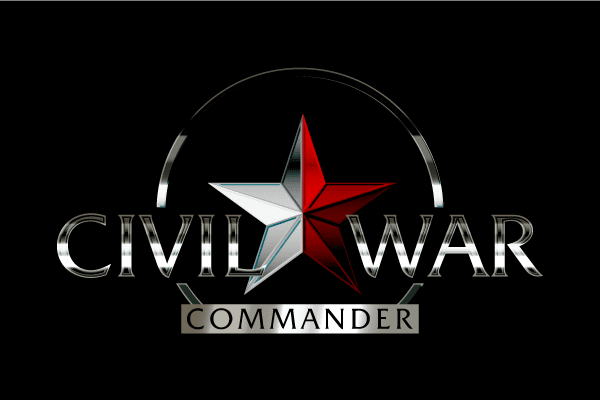American Civil War 1861-1865
Death of an institution. The bloodiest conflict in the Western Hemisphere.
- Robert E. Lee
"Excellent piece of work. Great beautiful game. Fully worth it."
"Pictures do not do it justice. Has to be seen in person to get the full effects of it.
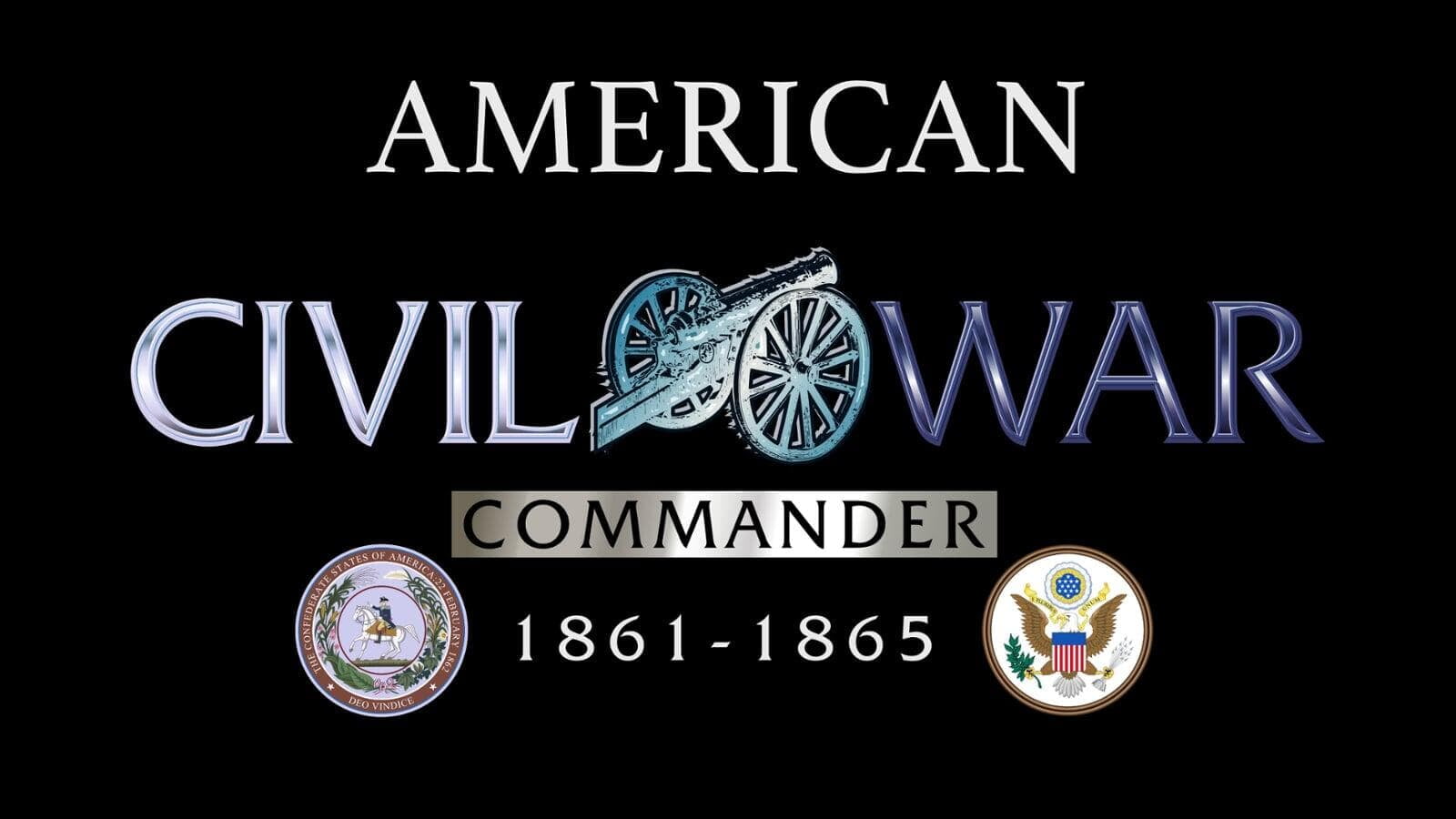
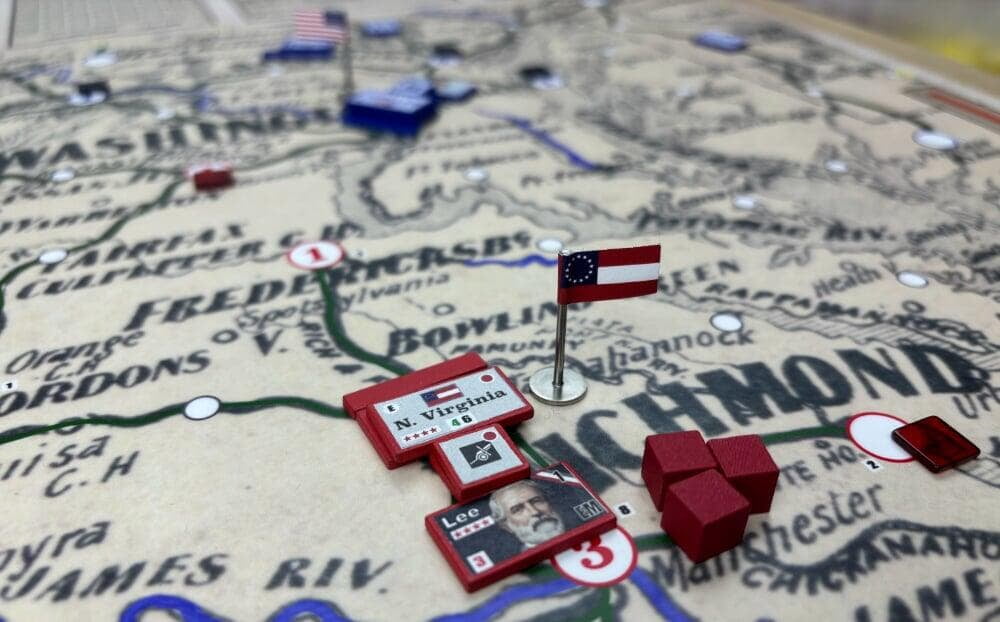
Your Challenge
Which American Civil War Commander's saddle will you mount? Federal or Confederate?
Federal
Can you afford to wait for the naval blockade to starve the Confederacy? How safe is Washington? What would an early capture Richmond do? If you keep fighting the South at the expense of your own men you will bleed their armies white, they cannot keep up with your numbers.
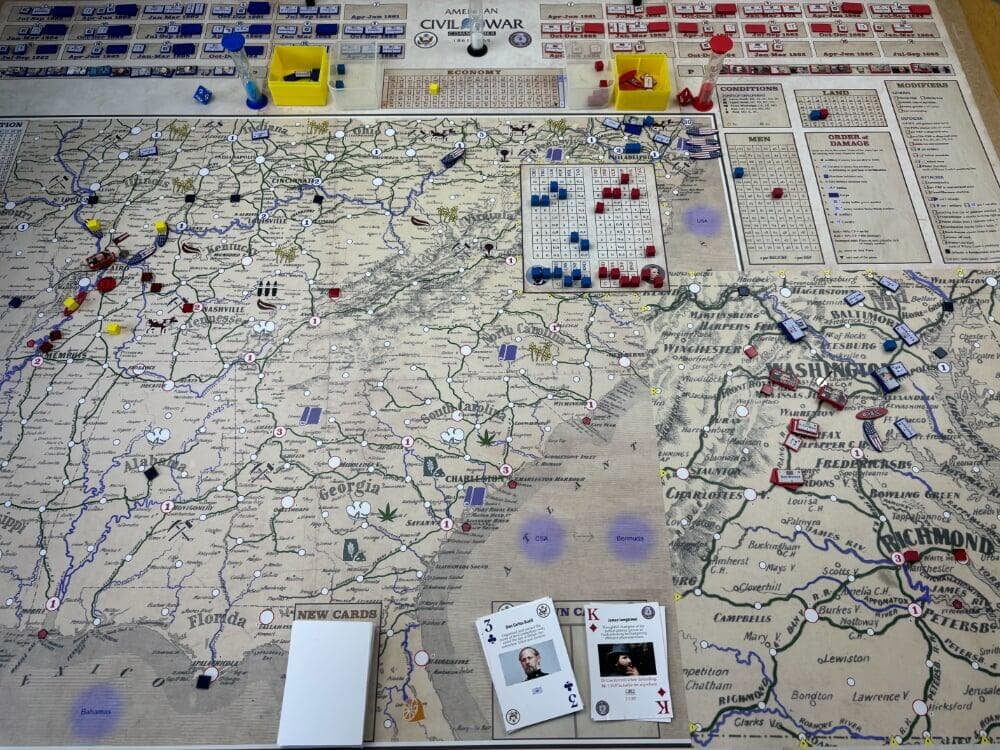
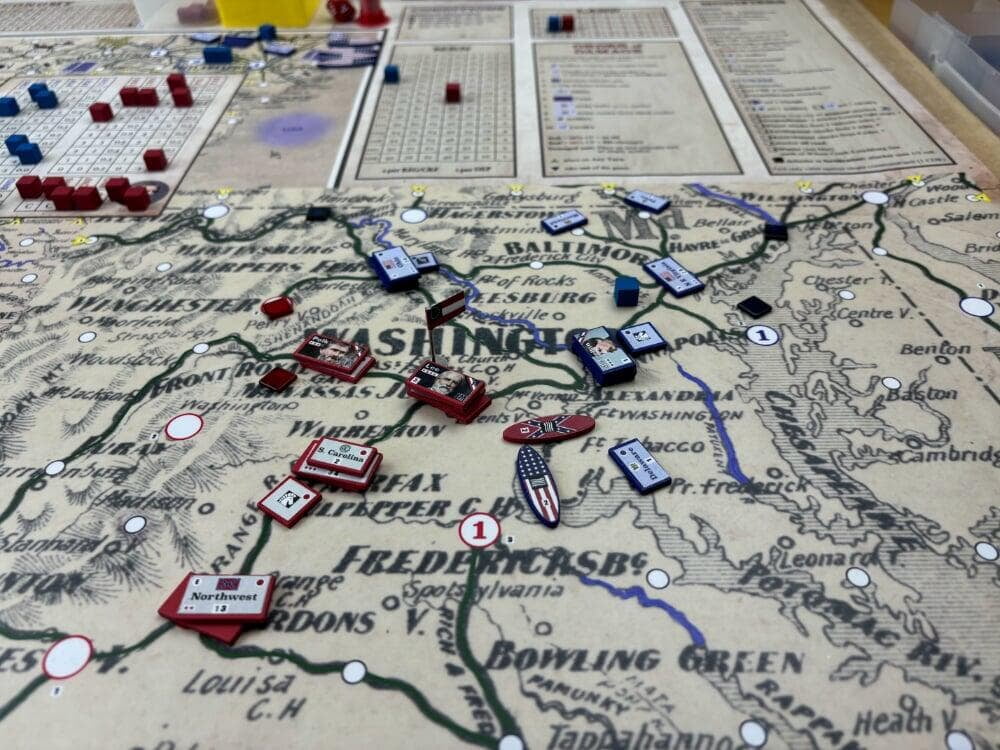
Confederate
If you win enough decisive battles in the first half of the game it may damages the North's popular support for the war irreparably? Time is on your side. If you hold on to your land and repulse the Union offensives you may just win; but you must resist the urge to invade the North.
American Civil War GAME BOARD
- 1-2 player game imitating the professional war gaming played by HQ staff officers.
- Large premium photo paper board (45 x 35 in) with historical period map; highly detailed and educational.
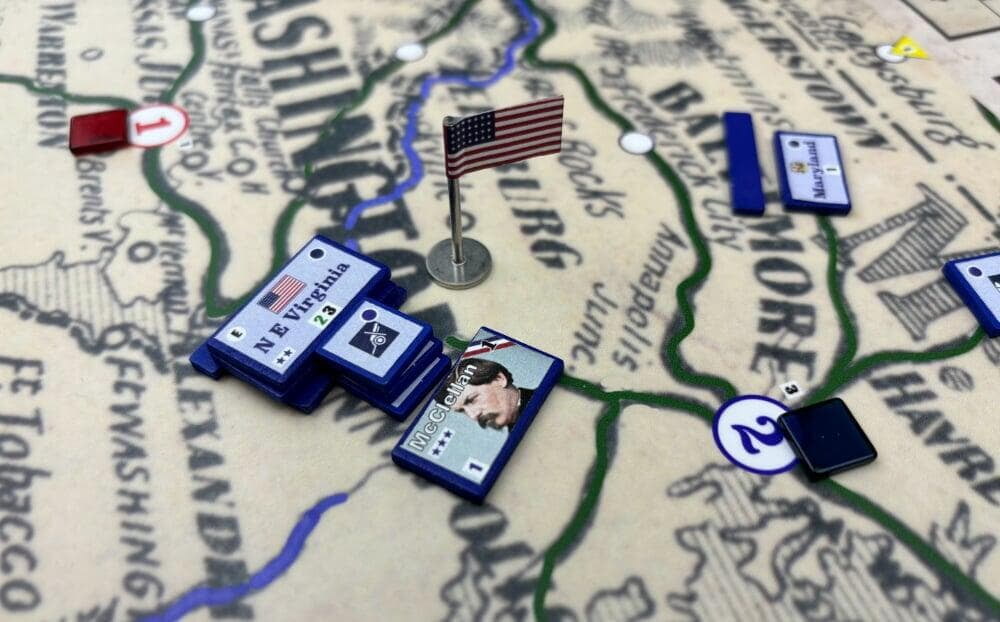

GAME-PLAY BALANCE
American Civil War UNITS
- Over 350 pieces with over 40 unique individual units.
- Laser cut wooden counters.
- 24 commander chits with individual qualities and promotion potential.
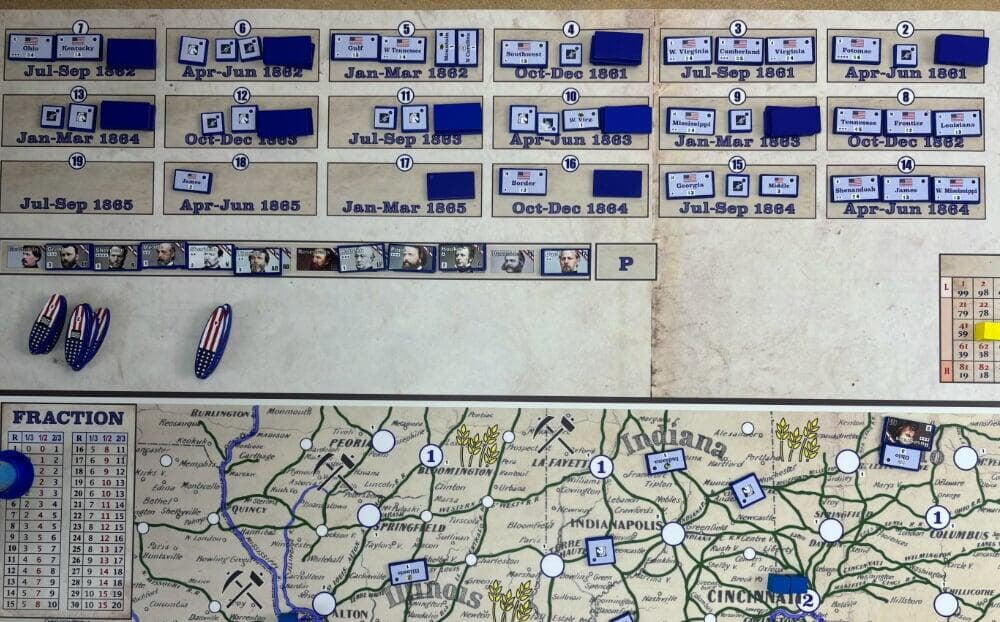
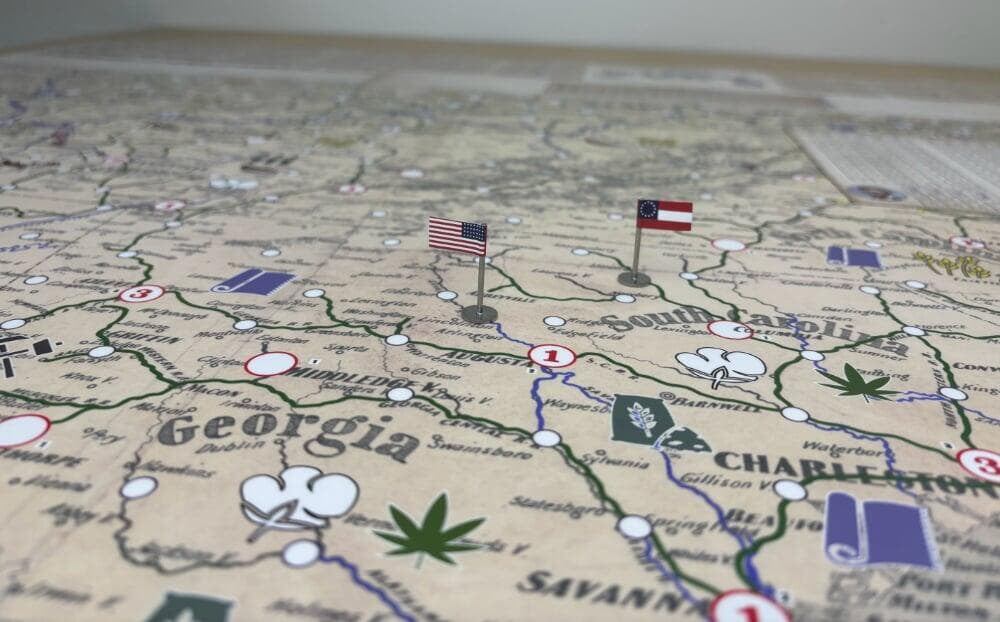
American Civil War EVENTS
American Civil War CARDS
Use deck separately for any card game.
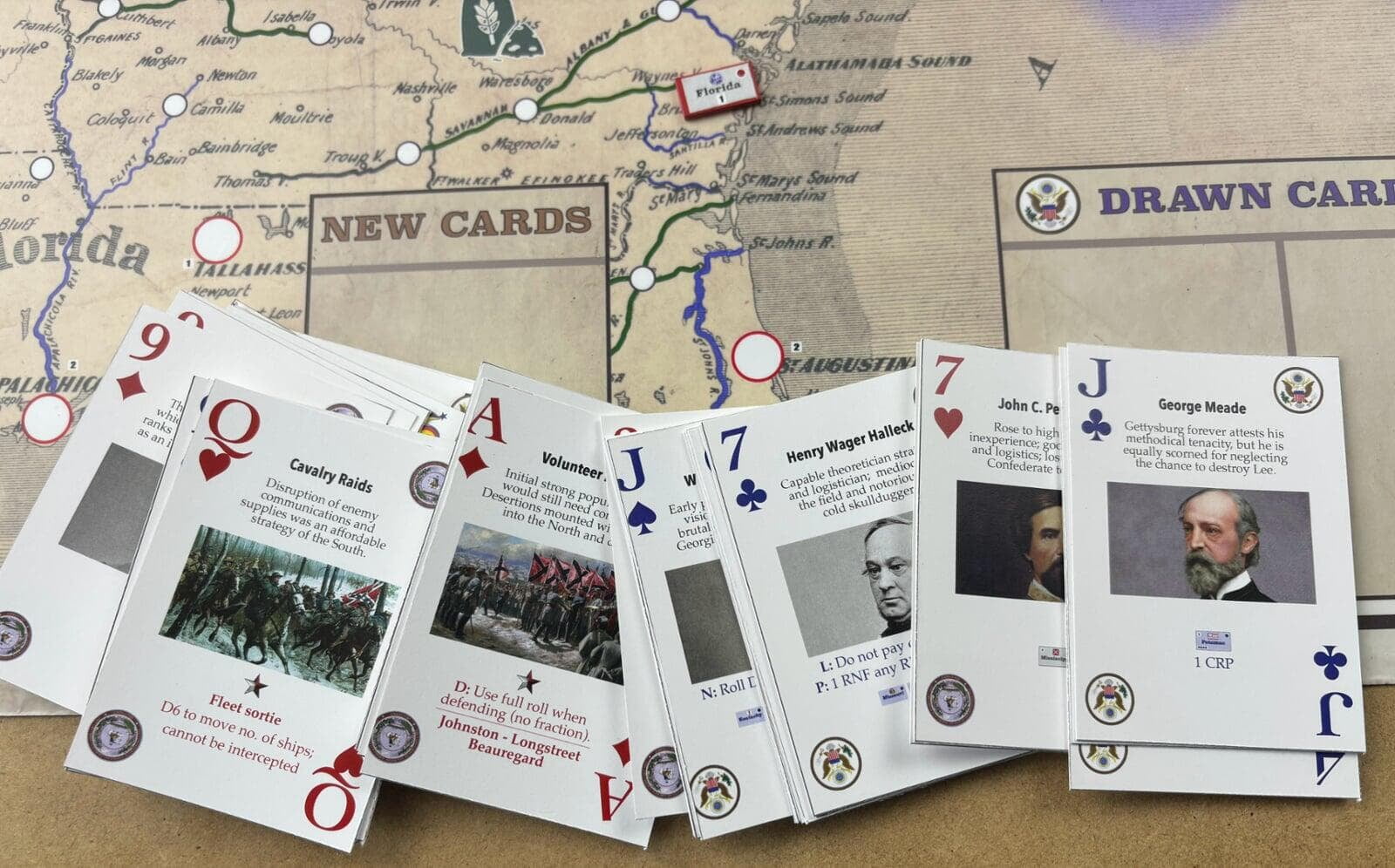
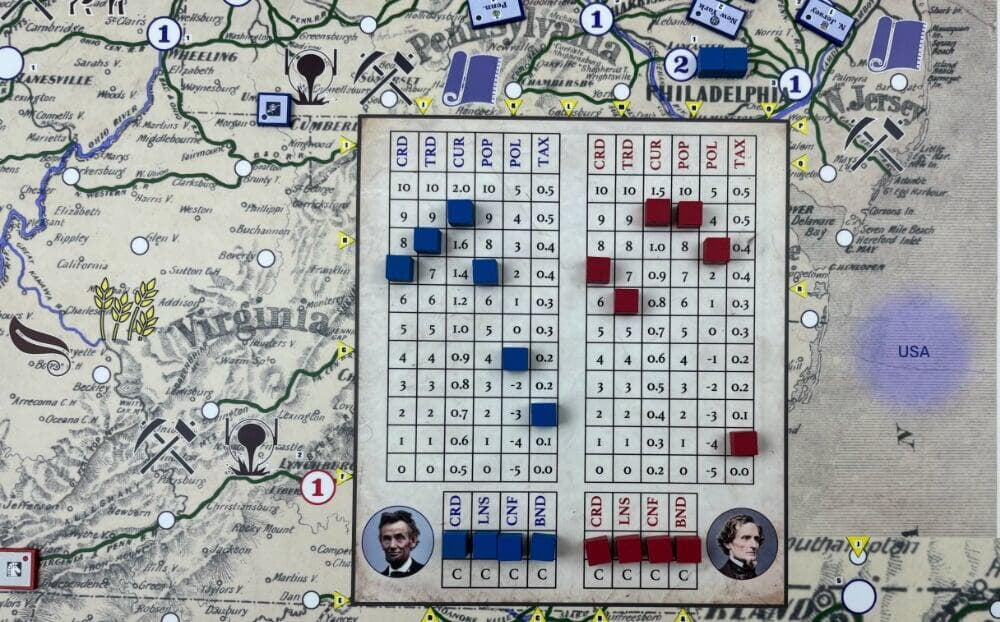
American Civil War ECONOMY
American Civil War HISTORICAL SUMMARY
American Civil War HISTORICAL SUMMARY
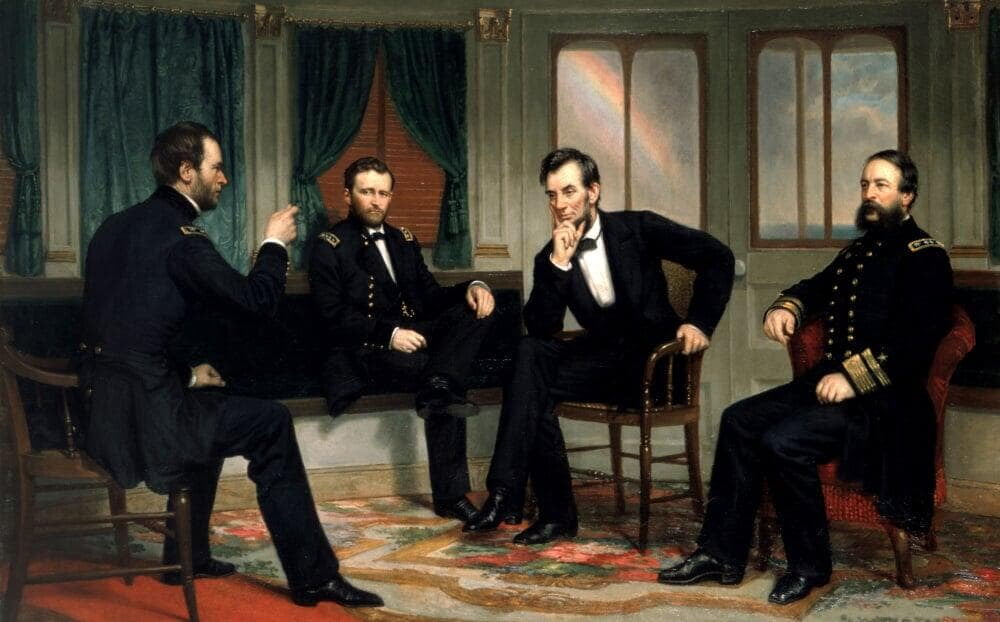
Death of an institution. The bloodiest conflict in the Western Hemisphere.
For over a century, there has been an ongoing discussion on the cause of the American Civil War. One extreme holds that Abraham Lincoln was resolved to destroy the cruel institution of slavery from the start and abused his Federal charter by using the Union Army to accomplish it. On the other end of the historiographical spectrum lies the narrative of the Lost Cause of the Confederacy, which holds that the South was chiefly concerned with defending the autonomy of states' rights over the preservation of the peculiar institution.
Regardless of ideological drive, the American Civil War saw the greatest clash of arms in the Western Hemisphere. The tragic heavy losses witnessed in battles such as Cold Harbor and Antietam stem from outdated military formations and tactics used with modern weapons of unprecedented killing capacity.
Differing strategies competed for victory. The Anaconda Plan sought to constrict the Confederate trade. Robert E. Lee, genial though he was, persisted valiantly to give the enemy a decisive blow in a Napoleonic battle and bring the war to an end that way. The Union finally agreed to use its advantage in numbers and resources to wage a war of attrition. Ulysses S. Grant was the first modern general to lead troops from the rear. William Tecumseh Sherman grasped the use of destruction and terror with few holds barred to subdue the enemy.
The conflict was, unlike others (Russian, Chinese, Spanish, Korean, Vietnam) a civil war par excellence in that it was mostly devoid of foreign entanglements.
The economy of the Civil War was as frail as it was peculiar. With the failure of the King Cotton strategy, the South failed to rely on innovative ways to raise money for the war. The Confederacy mitigated the Union’s death grip on imports through blockade runners but it could have tried other methods such as increased taxes or land sales. The Union’s expert manipulation of currency proved more reliable.
All these considerations are reflected in the game, to some extent. This is a great laboratory that gives you a chance to try out different military strategies and economic policies to win. Hindsight is 20-20. Find out if victory was as assured for the Union as it may seem or if the Confederacy could have made it!

